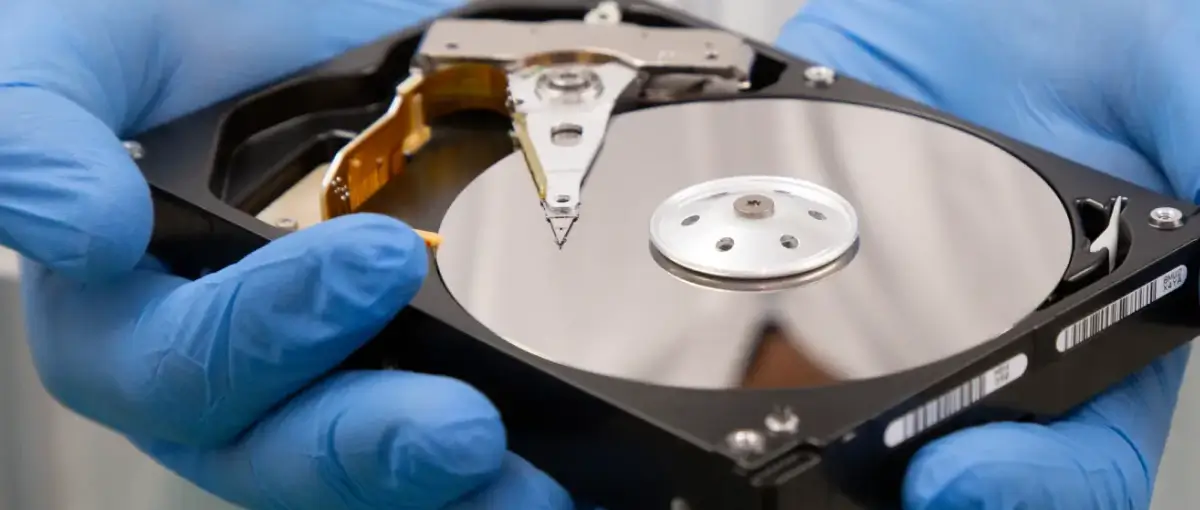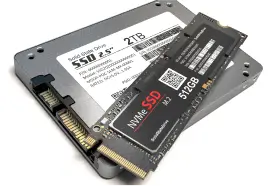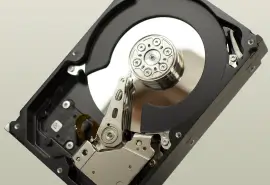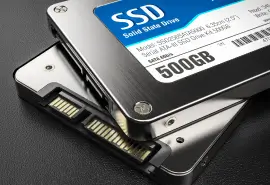Despite the exponential growth of solid-state drives (SSDs), hard disk drives (HDDs) are still the dominant storage technology in 2023. That is because hard drives are cheaper and provide more storage space. Some insiders argue that comes at the cost of durability, but users can extend hard drive lifespan. The experts at Secure Data Recovery, the authority in RAID, SSD, and hard drive recovery, explain how to maximize the life of a hard drive.
Factors That Impact HDD Lifespan
A hard drive’s most significant limitation is the fact that it is a mechanical storage device. While the science behind hard drives can be complex, the HDD’s operation is simple.
Hard drives store large amounts of data on a stack of magnetic platters. The device features several moving parts, including an actuator arm, to position precise instruments over specific locations on the rotating platters. Those instruments, known as read/write heads, are responsible for recording new data or retrieving saved files.
Given their compact design, HDDs have almost zero margin for error. Most platters perform between 5400 and 7200 revolutions per minute. Most read/write heads hover less than 10 nanometers from the platter’s surface. As a result, the sensitive components within a hard drive are susceptible to damage from sudden impacts and mechanical failure from long-term stress.
If these moving parts fail, the hard drive will not function.
Since their introduction, data storage manufacturers have developed technologies to produce faster, more durable hard disks and will continue to do so.
However, users can still implement practical measures to prolong the lifespan of a hard drive.
7 Steps To Maximize Hard Drive Lifespan
Following these steps will maximize a hard drive’s lifespan:
Step 1: Handle With Care
As mentioned, internal and external hard drives are vulnerable to suffering physical damage. While modern hard drives are more resistant to vibrations, users should still exercise caution when handling HDDs. Sudden impacts could destroy delicate components or scratch the platter, leading to data loss.
Step 2: Prevent Power Surges
Voltage fluctuations are harmful to all storage devices, including hard disks. Power surges happen even though the hard drive’s printed circuit board contains electronic components that protect its processors from dangerous electrical currents. Connect the computer or device to a surge protector or uninterrupted power supply to mitigate the risk of a spike that damages the PCB. In addition, do not shut down a computer before completing all the procedures. Doing so could result in data corruption.
Step 3: Environmental Exposure
Exposure to extreme temperatures could cause the hard drive to overheat and malfunction. Hard disks have temperature ranges for safe operation. Consult the manufacturer’s documentation for a model’s range. Particulates, like dust, can affect ventilation and temperature inside the HDD’s case. In addition, foreign substances, such as liquid, could cause severe platter degradation and corrode mechanical parts.
Step 4: Monitor Usage Patterns
HDDs excel at storing large file collections, but struggle compared to SSDs for applications that demand high-speed performance, like gaming. Monitor how the hard drive is used and determine if it fills those needs. Otherwise, consider supplementing the HDD with an SSD or moderating usage.
Step 5: Defragmenting
Defragmenting is the process of reorganizing data on a hard disk drive to store its contents in the smallest amount of space. The practice leads to efficient storage, which increases the HDD’s speeds, minimizes heat generation and wear-and-tear, and reduces file fragmentation.
Step 6: Check S.M.A.R.T. Data
S.M.A.R.T. (Self-Monitoring, Analysis, and Reporting Technology) is a monitoring tool within the hard drive’s firmware that analyzes various attributes and reports the health of its hardware. With S.M.A.R.T. data, users can prepare for predictable failures. To access S.M.A.R.T. data on Windows, users can open the Command Prompt. (Warning: A command-line interpreter requires users to understand specific commands, language, and parameters. Improper usage could result in serious errors. Beginners beware.)
Step 7: Create Regular Backups
All storage devices fail. It is just a matter of time. Avoiding data loss at the time of hard drive failure is part of maximizing its usage. Creating regular copies of data with an external hard drive, cloud storage service, or backup program is essential. Save important data as soon as an HDD begins making unusual noises. For best results, follow the 3-2-1 Rule: Store three copies of data on two different storage devices while maintaining one set of files offsite.
Lifespan of a Hard Drive
Despite predictions of obsolescence, the hard drive remains a competitive storage device. Though how long hard drives last is a source of debate, there are steps that users can take to extend the lifespan of a hard drive. Handling the devices with care, plugging them into surge-protected power supplies, storing them in stable environments, and monitoring their health and usage can contribute to a more durable, reliable hard drive.
However, unpredictable failures still happen, and critical data on the hard drive can become inaccessible.
In those circumstances, a professional data recovery service is the most reliable method of restoring lost data.
Since 2007, the engineers at Secure Data Recovery have encountered every data loss scenario. In that time, we have received the most industry-specific certifications, recovered billions of files for over 100,000 satisfied customers, and maintained a 96% success rate. All while offering flexible service options, a free evaluation, and a “No Data, No Recovery Fee” guarantee. We recover your data, or you pay nothing for our services.
Call us at 800-388-1266 or visit one of our convenient locations to start a case and reverse data loss.









